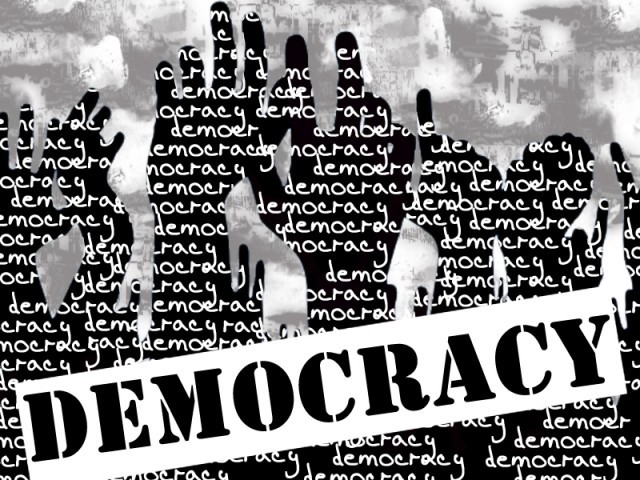
In the aftermath of World War I, President Woodrow Wilson set out to make the world safe for democracy. Since then, US Presidents have marched to the drumbeat of Wilsonian idealism. Indeed, most US foreign policy is carried out under the pretext—and in some cases perhaps the genuine belief— that America is delivering democracy to the rest of the world. Therefore, President George W. Bush’s use of that rationale for foreign engagements is not new or unusual, and it is logical that one of the recently stated missions of US intelligence agencies, including the Central Intelligence Agency (CIA), is to “bolster the growth of democracy and sustain peaceful democratic states.”
Most people, including most Americans, would be surprised to learn that the word “democracy” does not appear in the Declaration of Independence (1776), the Constitution of the United States of America (1789), or its first ten amendments, known as the Bill of Rights (1791). They would also be shocked to learn the reason for the absence of the word democracy in the founding documents of the USA. Contrary to what propaganda has led the public to believe, America’s Founding Fathers were skeptical and anxious about democracy. They were aware of the evils that accompany tyranny—in that case, the tyranny of the majority. The Framers of the Constitution went to great lengths to insure that the federal government was not based on the will of the majority and was not, therefore, democratic.
The original Constitution established the rule of law and the limits of government. About 20% of the Constitution itemizes things that the federal and state governments may not do. Another 10% of the Constitution is concerned with positive grants of power. The bulk of the Constitution—about 70%—addresses the Framers’ conception of their main task: to bring the United States and its government under the rule of law.
The Constitution is primarily a structural and procedural document that itemizes who is to exercise power and how they are to exercise it. The Constitution divided the federal government into legislative, executive and judicial branches. Each branch was designed to check the power of the others because the Founders did not want to rely only on the voters to check government power.
As a result, citizens were given little power to select federal officials. Neither the President, members of the judiciary nor the Senate were elected by direct popular vote. Only members of the House of Representatives were directly elected by popular vote. The Constitution was not a Cartesian construct or formula aimed at social engineering, but something to protect individual citizens from the government. In short, the Constitution was designed to govern the government, not the people.
The Bill of Rights further establishes the rights of the people against infringements by the State. The only claim citizens have on the State, under the Bill of Rights, is for a trial by a jury. The rest of the citizen’s rights are protections from the State.
If the Framers of the Constitution did not embrace democracy, what did they adhere to? To a man, the Framers agreed that the purpose of government was to secure citizens in John Locke’s trilogy of the rights to life, liberty and property. The Framers wrote extensively and eloquently on liberty. John Adams, for example, wrote that “the moment the idea is admitted into society, that property is not as sacred as the laws of God, and that there is not a force of law and public justice to protect it, anarchy and tyranny commence.”
The Founders’ actions often spoke even louder than their words. Alexander Hamilton, a distinguished lawyer, took on many famous cases out of principle. For example, after the Revolutionary War against the colonial power, Great Britain, the state of New York enacted harsh measures against Loyalists and British subjects. These included the Confiscation Act (1779), the Citation Act (1782) and the Trespass Act (1783). All involved the taking of property.
In Hamilton’s view, these Acts illustrated the inherent difference between democracy and the law. Even though the Acts were widely popular, they flouted fundamental principles of property law. Hamilton carried his views into action by having the rule of law thoroughly applied. He successfully defended— in the face of enormous public hostility—those who had property taken under the three New York state statutes.
The Constitution was designed to further the cause of liberty, not democracy. To do that, the Constitution protected individuals’ rights from the government, as well as from their fellow citizens. To that end, the Constitution laid down clear, unequivocal and enforceable rules to protect individuals’ rights.
In consequence, the government’s scope and scale were strictly limited. Economic liberty, which is a precondition for growth and prosperity, was enshrined in the Constitution, and that’s how things remained for America’s first century of extraordinary development and growth.
Author Steve H. Hanke

0 responses on "On Democracy"